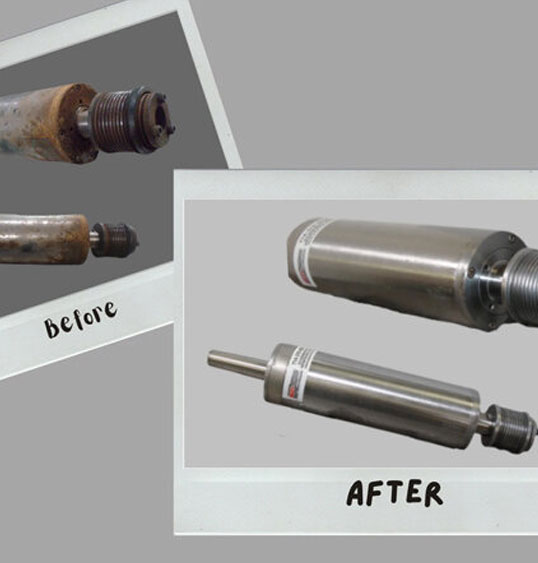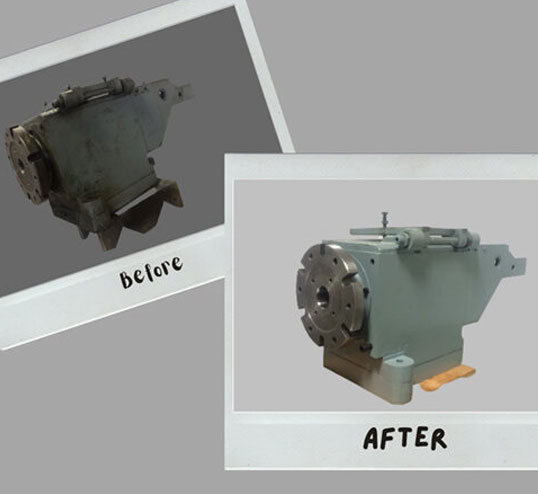If you are having problems with your spindle not operating like it once did, we can help. We rebuild all makes and models of spindles. If your spindle sounds different, makes more noise, or sounds rough, we can help. There are many things that can happen to a spindle during operation, such as contamination of the bearings, usually coolant, cutting oil, or material being machined. A broken tool or crash of any kind can and most likely will damage the bearings. If run after a noticeable event such as a crash will result in more damage to your Spindle. Please call us at any time. You will talk to a Spindle expert and with a little information supplied to us, we can diagnose the problem and then determine the best action.
Our process is easy, once it is determined that your Spindle needs repair/rebuilt. All you need to do is supply your information to us by filling out our Request For Repair (RFR) form, scan and email it to us or send it with the Spindle to our shop at 5572 Buckingham Dr, Huntington Beach, CA 92649.
When sending a spindle to us for repair include your tool holder with retention knob and your drawbar. If you are sending a lathe or grinding spindle, these items are not needed.

Our rebuild process:
- Receive the Spindle at our Shop.
- Receive notice that we have received it.
- Your Spindle is entered into our system and is tracked throughout the process.
- Your Spindle will be disassembled after we receive it. This typically takes 2-3 days. The disassembly is photo documented and logged to your S.N Spindle. At this point we do our failure analysis, meaning, we determine what caused this Spindle to need to be repaired. With this determination, we will see what we can do to help prevent the issue from re-occurring. Of course, we document all this and communicate it back to you, the customer. clearly communicating What we found and ways to prevent it from reoccurring.
- We examine each part visually, and clean and polish each part. This gives us the opportunity to see any damage to the part. All parts are then solvent-washed and dried with clean compressed air. no rags or towels will be used as the lint and fibers are bad

- The parts now go into our inspection room, we make the following checks:
- Size of bearing journals on the shaft.
- Size of the housing bores.
- Tool nose interface CAT, ISO, HSK, Jarno, and Lathe chuck tapers are all checked for size gage line and run out.RO of shaft bearing journals…
- RO of shaft drawbar ID.
- Alignment check of housing bores and shoulder squareness
- All threads & nuts fits
- Spaces between bearings, parallelism, and flatness
- Drawbar pull force
- Disc spring check for wear or breakage
- Encoder testing
- Proximity switch testing
- Motor Winding testing
- After all the parts have been thoroughly inspected we can now prepare the quotation.
- Get pricing on all replacement parts bearings, “O” Rings, seals, encoders, proximity sensors, or other parts that may need to be replaced.
- Send a quote to the customer.

- If parts need rework they will get processed upon receipt of the customer-issued PO.
- Until a rebuild has been approved with a PO, there is no change to all the above works mentioned. Except for rare occasions where a customer has a very large or complex spindle, then a small service charge will be issued. This will be notified to the customer prior to the work being started.
- After PO approval all parts in need of rework are processed. New parts are then ordered.
- When all reworked parts are complete and all the bearings, seals, and other parts are received assembly can begin.
- Assemble the spindle in a clean room environment.
- Run, test, and balance every spindle.
- Prepare for shipment and paint if required.
- Package carefully apply rust inhibitor and ship the spindle back per the customer’s desired method.



